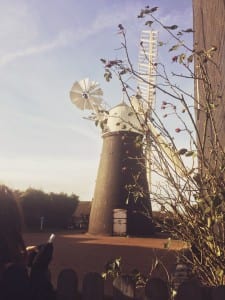On Monday 2nd February, we started our second week of site specific. We were taken on a tour all around Steep Hill, Lincoln. After viewing the lovely sights it had to offer I decided to dig deeper and discover some of the history behind Ellis Mill.

After doing some background research, I have ascertained that Ellis Mill is the last remaining mill to operate and still produce flour in Lincoln. The mill has continued working after an incredible two hundred years from when it was first built. There is evidence that proves there was a mill around Steep Hill before the Cathedral (the main tourist attraction) had even finished being built.
Looking further into the history of the mill, I have discovered that in 1551, Lincoln suffered an absence of wind for five weeks. As a result of this, the mill was unable to produce flour. This left most of the people in the city deprived of food, as the whole population relied on bread, especially the poor.
History of Ellis Mill:
http://www.lincstothepast.com/exhibitions/places/windmills/ellis-mill/
http://www.visitlincoln.com/things-to-do/ellis-mill
After investigating the historic past and backgrounds of windmills in Lincoln, it has now enabled me to appreciate how Ellis Mill is a major importance for the industrial history of the city. As Mike Pearson suggests:
“a visitor’s experience of the same place may invoke reactions and associations entirely differently from that of the inhabitants: it is possible to be in a place without realizing its significance for the groups of people who have historically inhabited it.[…] A pile of old stones to walk your dog over then, or the defeated hopes of a nation?” (2010, 24).
When I first visited the mill, I was not particularly captivated or interested by it, as I did not have a great underlying knowledge for it. Having a sense of understanding for this, has allowed myself as a spectator, to admire the layers of history attached to the site, offering more than what meets the eye.
Flickr site: https://www.flickr.com/photos/131412114@N08/
Pearson, M. (2010) Introduction in Site Specific Performance. Basingstoke: Palgrave Macmillan.


